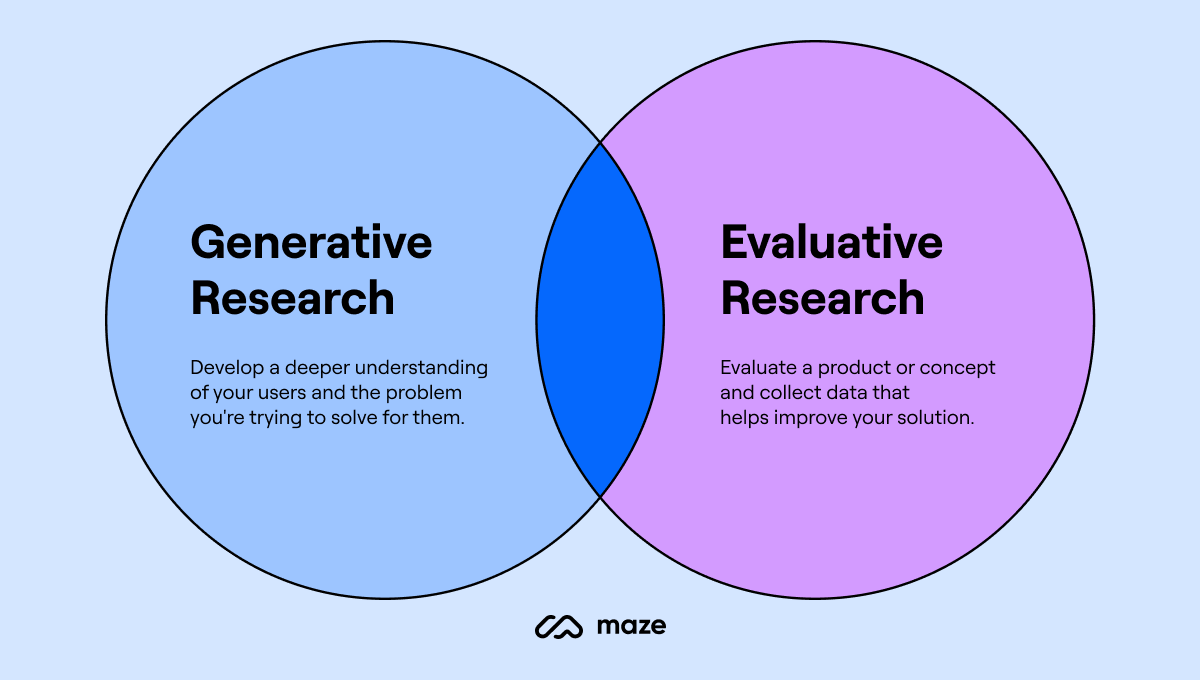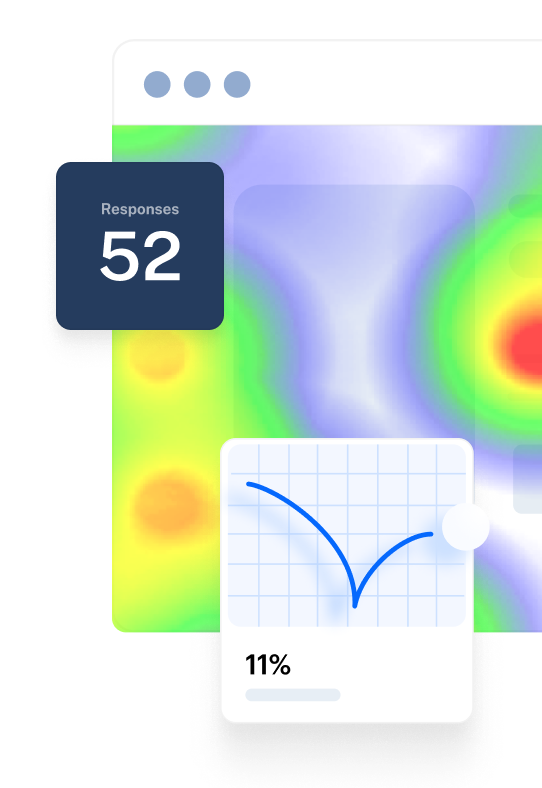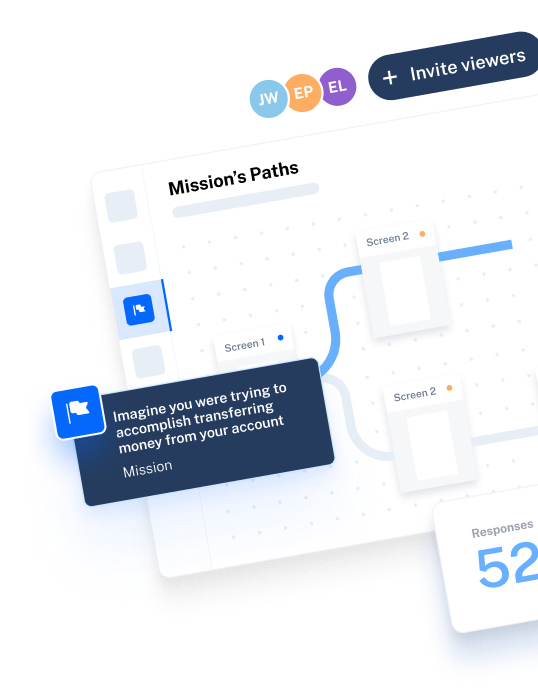Chapter 4
Generative research explained: Key methods and real-world examples
This chapter explains what generative research means and zooms in on two generative methods you can use to collect meaningful data.

What is generative research?
Generative research is a research method that “generates” a deep understanding of people’s motivations, pain points, behaviors, and more. The goal of generative research, also known as exploratory or discovery research, is to help you identify a problem statement, frame the relevant problem to be solved, and gather enough evidence to move forward confidently.
I like to use the term ‘exploratory research’ because, at its essence, that is what generative research is about. You’re exploring a space such as people's thinking styles, behaviors, and motives to make better decisions.

Paige Bennett
Design Research Manager at Dropbox
Generative research happens at the discovery phase of the user research process and usually takes place before the beginning of the design and product development process. Conducting generative research early will ensure you grasp the problem space well by studying people’s motivations, needs, and pain points.
Learning about the people you’re building for can also help you identify new opportunities for an existing product or improve the solution you’ve already created. Usually, when companies are trying to innovate, generative research is an effective way to discover new insights.
One way to generate new ideas is to bring the people you’re building for into the creation process. The research team at Dropbox explains why this is vital:
Complex problems demand our design process become more inclusive and generative. To design resonant, useful solutions, we need to rely on the expertise of the people who will use what we make. One of the approaches we’re using for this is to bring the people we design for into the design process itself.
The research team at Dropbox
Why is generative research important?
Generative research plays a crucial role in the design and product development process. Without a deeper understanding of your users and their motivations, you risk building a product that no one actually needs or will use.
Conducting generative research provides insights into your users' goals, needs, and behaviors and allows you to clearly define the problem you want to solve for your customers. This way, you can focus your efforts on designing solutions that solve relevant problems and add real value to your users.
The difference between generative and evaluative research

Generative research methods such as interviews or field studies are used to discover new information about your users’ goals and motivations and better understand their behavior—in and outside the product. On the other hand, evaluative research methods such as usability testing are perfect for assessing a specific product solution to ensure it’s easy to use and works as intended.
Using both generative and evaluative UX research during the design process ensures the product you’re building addresses real needs, solves existing pain points, and does these in the most viable way. This continuous learning process uncovers new insights to help you create value for your customers.
To better understand the difference between the two, Erika Hall, co-founder of Mule Design Studio, recommends framing these two types of research as two distinct questions:
Generative research dives into “What problem might we solve?” while evaluative research asks, “How well is our solution working?”
Erika Hall
Co-founder of Mule Design Studio
Now let's explore two generative research methods you can use to collect meaningful insights. We dive deeper into evaluative research methods in the next chapter.
Generative UX research methods
A fundamental role of the user researcher is to bridge the gap between what users say and how they actually feel. Through generative research, you can uncover needs that your user has but isn’t usually articulating.
Two generative research techniques worth looking into are field studies and user interviews, both of which are essential in discovering new ideas and understanding people’s needs, motivations, and pain points.
Let’s look at these two generative research methods in detail and learn how you can use them to uncover new user insights.
Field studies
Field studies are research activities that take place in the user’s environment rather than in your office or lab. Researchers meet with and study participants in their environment, where they would most likely interact with the product or service in question.
Observing people in their natural environment rather than bringing them into a lab setting allows you to gain real insight into their processes and see situations that can help you understand how the product fits their daily lives.
Paige Bennett, Design Research Manager at Dropbox, explains that field studies are all about the context an environment provides you. By familiarizing yourself with the context, you can better understand the subject you’re researching. She explains:
When I was a researcher at WW (Weight Watchers), I did fieldwork in different member's homes across the U.S. At the end of each interview, I would ask the member if they would mind showing me the inside of their refrigerator. The reason was that there were so many rich insights to be gained from why their fridge was stocked with the food they had chosen. Sometimes, their fridge contents contradicted what they had shared and my job was to figure out why.

Paige Bennett
Design Research Manager at Dropbox
While people won’t just tell you their problems directly, you will detect patterns by observing the context in which people do an activity.
To get started with field studies, NNGroup recommends this four-step process to carry out a field study session:
- Screen for participants: Start by screening and selecting a mix of people who are reflective of your target audience
- Schedule and brief participants: Prepare participants about what to expect from the session and ask them about their typical day
- Plan your setup: Ask permission from participants to record, observe, and photograph them during the session. Record the sessions so you can revisit and share the findings with stakeholders.
- Conduct the visit: Brief your participants and tell them to behave as they usually would. This is where you observe them and get the chance to ask questions to clarify things.
User Interviews
User interviews are research activities that involve a moderation conversation between a researcher and a participant. Researchers ask users questions about a topic of interest to learn about that topic, discover specific problems, and find out opinions. By collecting this qualitative feedback, you can learn about the problems users encounter when using the product and identify the changes that need to happen.
During interviews, asking open-ended questions is critical to getting actionable insights and feedback. Create opportunities for the participants to share their stories, which will lead to the discovery of new ideas and insights.
Here are some examples of open-ended research questions that you can ask during user interviews:
- “Talk me through/tell me about the last time you…”
- “Explain the last time/explain why…”
- “Describe what happened…”
- “Walk me through how you…”
When you’re faced with an unexplored problem space or want to identify new product opportunities, generative research can help you turn questions into actionable next steps.
In the next chapter, you will learn about evaluative research and the most common evaluative methods and zoom in on how you can employ these methods in your research projects.
Frequently asked questions
What is generative research?
What is generative research?
Generative research, also known as exploratory or discovery research, is a type of research you can use to ��“generate” a deep understanding of people’s motivations, pain points, and behaviors. The goal is to help you identify the problem and find opportunities for solutions and innovation.
What is evaluative research?
What is evaluative research?
Evaluative research, also known as evaluation research or program evaluation, is a type of UX research used to evaluate a product or concept and collect data that helps improve your solution.
What's the difference between generative and evaluative research?
What's the difference between generative and evaluative research?
Generative research is about gathering information on your users’ goals and motivations to better understand their behavior.
Evaluative research is used to assess a specific product solution to ensure it’s easy to use and works as intended.
What is the difference between evaluative and formative research?
What is the difference between evaluative and formative research?
Evaluative research measures the success of a completed design, focusing on outcomes and user satisfaction. Formative research occurs during development, identifying issues and guiding iterative adjustments to meet user needs.




